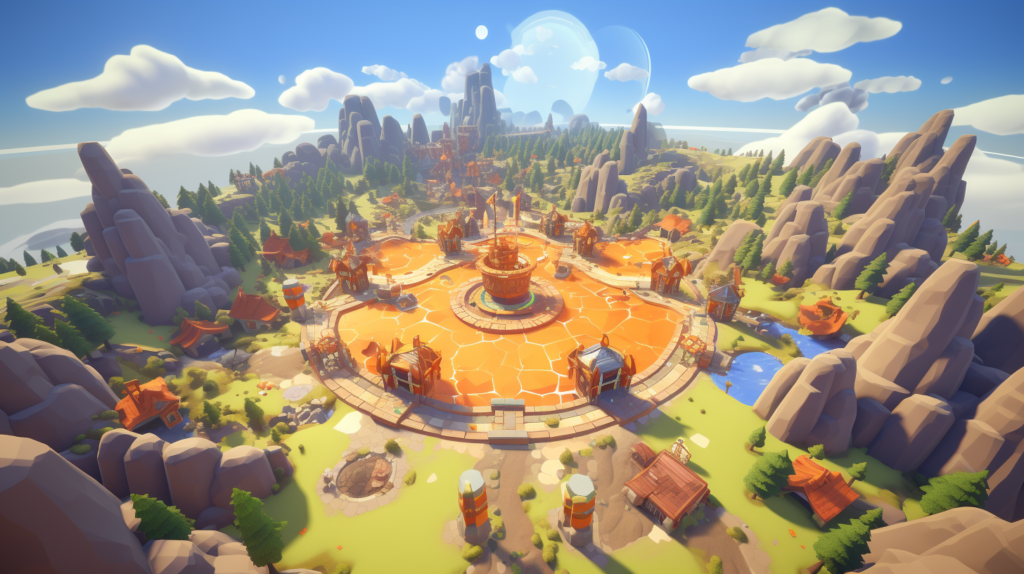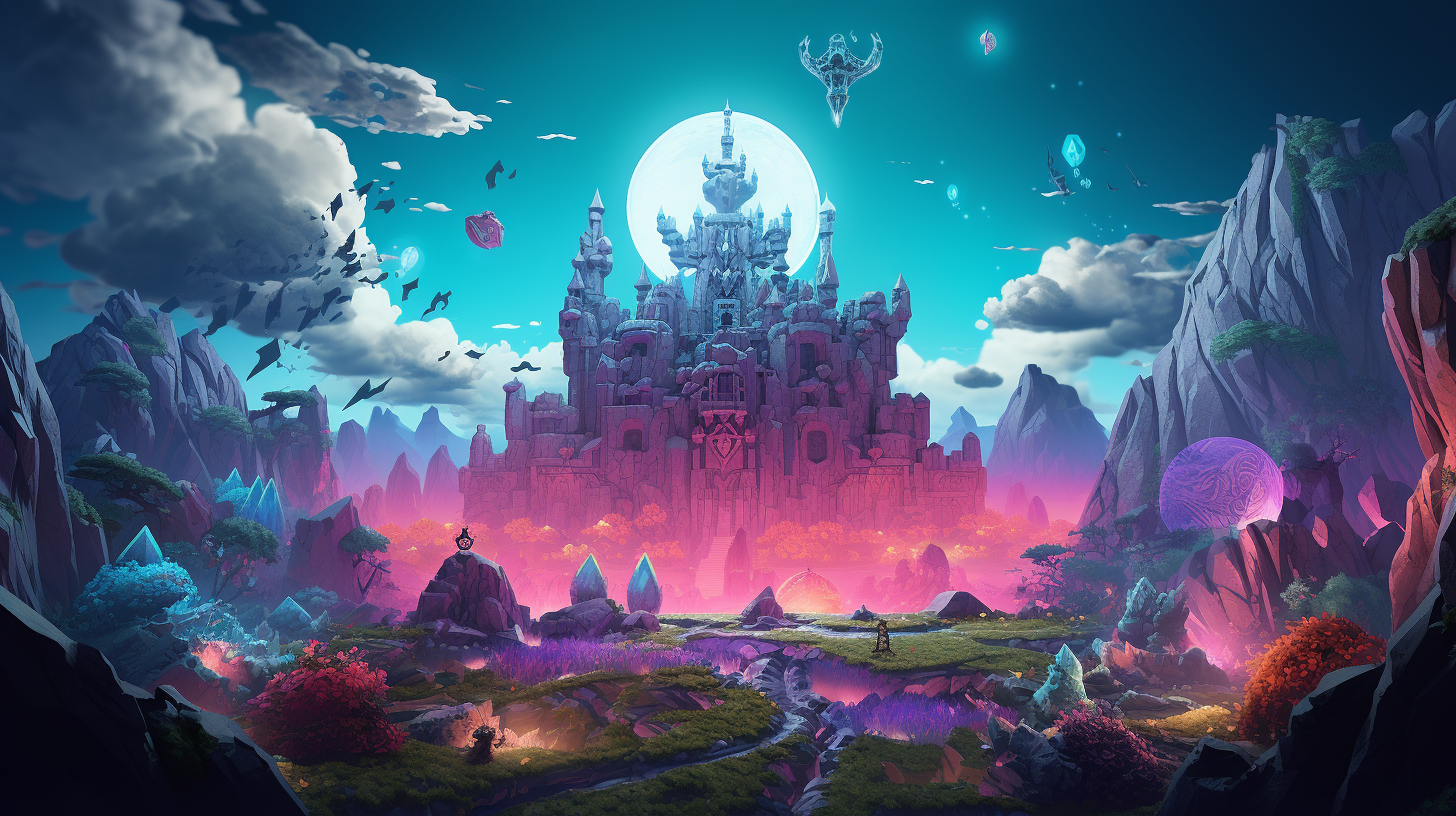Web3 gaming is revolutionizing the way we engage with digital entertainment. It merges the power of blockchain technology with the immersive world of gaming, offering a new level of interactivity, ownership, and economic opportunities. In this article, we will explore what Web3 gaming is, and its unique features, provide an example, and highlight the differences that set it apart from traditional gaming experiences.
Understanding Web3 Gaming
Web3 gaming refers to the integration of blockchain technology into the gaming industry, enabling decentralized and transparent gameplay, ownership, and economies. Unlike traditional gaming, where players have limited control over their in-game assets and their value is determined solely by the game developer, it empowers players to truly own their digital assets through the use of blockchain.
Features of Web3 Gaming
- Decentralization: It operates on decentralized blockchain networks, removing the need for a central authority to oversee the game. This decentralization ensures transparency, fairness, and the absence of single points of failure, making Web3 games more resistant to censorship and fraud.
- Ownership and Asset Interoperability: In Web3 games, players have true ownership of their in-game assets. These assets are stored on the blockchain, allowing players to buy, sell, and trade them independently. Moreover, Web3 gaming embraces the concept of asset interoperability, meaning that players can utilize their assets across different games, creating a vibrant and interconnected ecosystem.
- Economic Opportunities: It introduces novel economic models through concepts like GameFi (Game Finance). GameFi enables players to earn real-world value by participating in the gaming ecosystem. Players can monetize their skills, sell virtual assets, or contribute to the growth of Web3 game startups. This convergence of gaming and finance unlocks a plethora of opportunities for players to generate income from their gaming endeavors.
- Community Governance: Web3 gaming platforms often implement decentralized autonomous organizations (DAOs) that give players a voice in the decision-making processes. Through voting and governance mechanisms, players can influence the direction of the game, propose changes, and collectively shape the gaming experience.
An Example of Web3 Gaming: “CyberQuest”
To illustrate the concept of Web3 gaming, let’s dive into an example called “CyberQuest.” In this game, players embark on thrilling quests, battling monsters, and collecting valuable treasures. However, what sets CyberQuest apart is its integration of blockchain technology.
In CyberQuest, each in-game asset, such as weapons, armor, and potions, is represented as a unique token on the blockchain. Players have complete ownership and control over these assets, allowing them to freely trade or sell them on decentralized marketplaces. This ownership extends beyond the game itself, enabling players to utilize their hard-earned assets in other Web3 games that support interoperability.
Additionally, CyberQuest introduces a GameFi component, where players can stake their assets to earn passive income or participate in a Web3 gaming platform’s token economy. By contributing to the growth of the game and ecosystem, players can benefit financially, fostering a symbiotic relationship between players and developers.

Web3 Gaming vs. Traditional Gaming
Web3 gaming differs significantly from traditional gaming experiences in several ways:
- Ownership: In traditional gaming, players don’t have true ownership over their in-game assets. Game developers hold ultimate control, and players’ assets often lack real-world value. Web3 gaming flips the script, granting players full ownership of their assets and the ability to trade them independently.
- Economy: Traditional gaming economies are closed systems, tightly controlled by game developers. Web3 gaming introduces open and decentralized economies, where players can freely participate, earn, and shape the value within the ecosystem.
- Transparency and Trust: Web3 gaming leverages the transparency of blockchain technology to ensure fairness and trust. Every transaction and asset exchange is recorded on the blockchain, fostering transparency and preventing fraud.
- Community Empowerment: Web3 gaming platforms embrace community governance through DAOs, providing players with a say in the decision-making processes. Traditional gaming often lacks this level of direct player involvement in shaping the game’s future.
Market Size and Growth
The Web3 gaming industry has witnessed remarkable growth over the past few years. According to industry reports, the global blockchain gaming market was valued at over $3 billion in 2020, and it is projected to reach a staggering $40 billion by 2025. This exponential growth can be attributed to several factors, including the increased adoption of blockchain technology, rising interest in decentralized finance (DeFi), and the growing demand for more immersive and player-centric gaming experiences.
Number of Web3 Games
Blockchain platforms are witnessing a surge in game development due to the growing popularity of Web3 gaming. While it is difficult to provide an exact count due to the dynamic nature of the industry, it is estimated that there are currently thousands of Web3 games available across different blockchain networks. These games span various genres, including strategy, role-playing, collectible card games, and more. Additionally, many established game developers are also exploring the integration of blockchain technology into their existing games or creating new Web3 game offerings.
Skills Required for Web3 Gaming
To actively participate in the Web3 gaming industry, certain skills are essential for both players and developers. Here are a few key skills that can greatly enhance one’s engagement:
- Blockchain Literacy: Understanding the fundamentals of blockchain technology, including concepts like decentralized networks, smart contracts, and tokenomics, is crucial for navigating the Web3 gaming landscape.
- Digital Wallet Management: Web3 gaming relies on digital wallets to store and manage in-game assets and cryptocurrencies. Familiarity with digital wallet applications and security practices is necessary to safeguard assets and engage in secure transactions.
- Smart Contract Development: For game developers, proficiency in smart contract development is invaluable. Smart contracts are self-executing agreements that automate various aspects of gameplay, asset ownership, and economic interactions within Web3 games.
- Community Engagement: Building and nurturing a vibrant community is a vital skill for Web3 game developers. Actively engaging with players, listening to feedback, and fostering a sense of community ownership can contribute to the success and longevity of a Web3 game.

The Transformative Impact of Web3 Gaming
It has the potential to revolutionize the gaming industry in numerous ways. Here are some key ways in which it is expected to change the gaming landscape:
- True Ownership and Value: Web3 gaming enables players to truly own their in-game assets, giving them the freedom to buy, sell, and trade these assets independently. This introduces a new paradigm where digital assets have real-world value and can be utilized across multiple games, creating a thriving asset ecosystem.
- Player-Centric Economies: Web3 gaming introduces decentralized and player-centric economies where players can earn real-world value through their gaming activities. By participating in GameFi mechanisms, players can monetize their skills, contribute to the growth of the gaming ecosystem, and benefit financially.
- Transparency and Trust: Blockchain technology, at the core of Web3 gaming, ensures transparency, immutability, and trust. Every transaction, asset exchange, and economic interaction is recorded on the blockchain, providing verifiable proof of ownership and preventing fraudulent activities.
- Community-Driven Governance: Web3 gaming platforms often implement decentralized autonomous organizations (DAOs) that empower players to participate in governance and decision-making processes. This community-driven approach gives players a voice, fostering a sense of ownership and allowing for collective decision-making.
Benefits of Web3 Games
Web3 games offer several benefits to players and developers alike:
- True Ownership: Web3 games grant players true ownership of their in-game assets, allowing them to control and monetize their digital belongings.
- Economic Opportunities: Through GameFi mechanisms, players can earn real-world value and generate income by participating in the Web3 gaming ecosystem.
- Interoperability: Web3 games support asset interoperability, enabling players to utilize their assets across multiple games and platforms, enhancing their gaming experiences.
- Transparency and Security: The use of blockchain technology ensures transparent and secure transactions, preventing fraud and ensuring the integrity of in-game assets and economies.
Scalability and Performance
One of the major hurdles in Web3 gaming is scalability and performance. Blockchain networks often struggle with handling the high transaction volume and speed required for seamless gaming experiences. The limited scalability of certain blockchain platforms can result in slow transaction confirmations and high fees, leading to suboptimal gameplay. Advancements in blockchain tech improve Web3 gaming’s scalability and performance, mitigating challenges through layer 2 solutions and sharding.
User Experience and Adoption
Web3 gaming platforms can sometimes present a steep learning curve for new users, particularly those unfamiliar with blockchain technology. The onboarding process, including setting up digital wallets, understanding gas fees, and interacting with decentralized applications, can be daunting. Improving the user experience by simplifying the onboarding process and creating intuitive interfaces will be crucial for the broader adoption of Web3 gaming.
Regulatory and Legal Considerations
The regulatory landscape surrounding Web3 gaming is still evolving, presenting challenges for both players and developers. Different jurisdictions have varying regulations and interpretations of blockchain technology, leading to uncertainty in compliance and potential legal issues. The industry must navigate these complexities and work towards establishing clear and standardized regulations to ensure the legitimacy and growth.
Security and Trust
While blockchain technology inherently provides security benefits, Web3 gaming is not immune to security risks. Smart contract vulnerabilities, phishing attacks, and hacking attempts can pose significant threats to the integrity of Web3 games and the safety of players’ assets. Robust security measures, comprehensive auditing processes, and education on best security practices are essential to build trust within the community.
NFTs: The Driving Force
Among the various segments of Web3, non-fungible tokens (NFTs) have emerged as the fastest-growing sector. NFTs are unique digital assets that can represent ownership of in-game items, artwork, virtual real estate, and more. They have gained widespread attention due to their ability to establish verifiable ownership and provenance, opening up new possibilities in Web3 gaming and beyond.
NFT marketplaces, such as OpenSea and Rarible, have experienced explosive growth, with a surge in trading volumes and the creation of unique and valuable digital assets. The popularity of NFTs has attracted artists, collectors, and gamers, driving innovation and further adoption of Web3 technology.
Paradigm Shift in Ownership and Control
Web3 represents the future of gaming by ushering in a paradigm shift in ownership and control. Traditional gaming models have often limited players’ control over in-game assets and economies, leading to a lack of true ownership and limited economic opportunities. Web3 gaming disrupts this model by empowering players to have complete ownership of their assets, enabling them to freely trade, sell, and utilize their digital possessions across different games and platforms.
Player-Centric Economies and Incentives
It introduces player-centric economies and incentives through concepts like GameFi. Players are no longer mere consumers but active participants who can earn real-world value from their gaming activities. By staking assets, contributing to the growth of Web3 gaming platforms, and participating in decentralized governance mechanisms, players can unlock economic opportunities and shape the direction of the gaming ecosystem.
Interoperability and Cross-Platform Experiences
Web3 gaming promotes interoperability, allowing players to seamlessly transfer and utilize their assets across different games and platforms. This interoperability breaks down the barriers between games, fostering a connected and vibrant ecosystem where players can have unified experiences across multiple virtual worlds.
Decentralization and Trustless Environments
Web3 gaming leverages the decentralized nature of blockchain technology, providing transparency, fairness, and trust within gaming ecosystems. Smart contracts and distributed ledgers ensure the integrity of in-game assets and transactions, reducing the risk of fraud and enabling players to trust the systems they engage with.
Conclusion
Web3 gaming is a transformative force within the gaming industry, offering players unprecedented control, ownership, and economic opportunities. With features like decentralization, true asset ownership, GameFi, and community governance, Web3 games are reshaping how we perceive and engage with interactive experiences. As the blockchain industry continues to evolve, we can expect more Web3 game startups, showcase events, and startup accelerators to emerge, further fueling the growth of this exciting field. Embrace the future of gaming—welcome to Web3 gaming!




